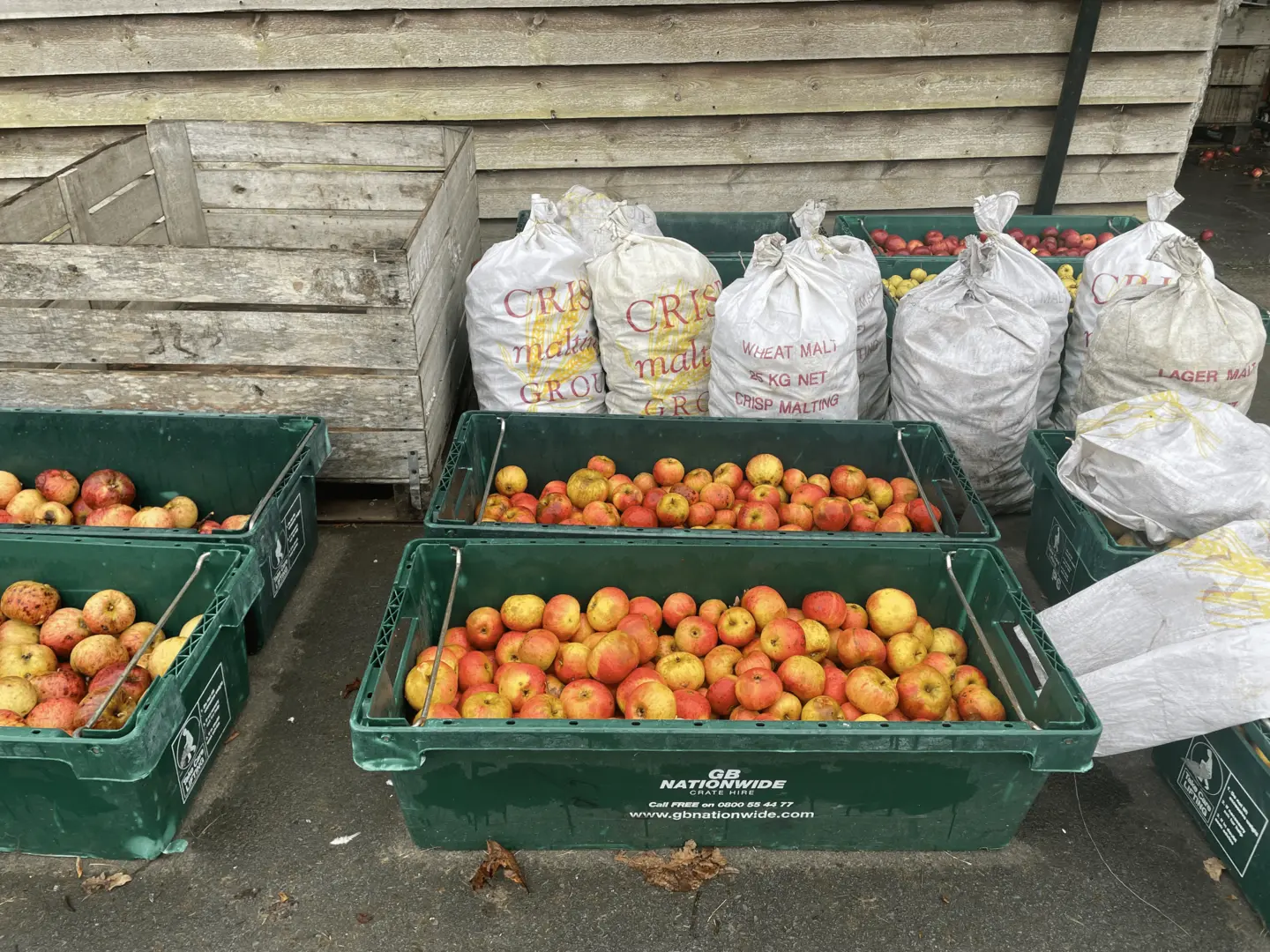How is Cider Made?
Cider making begins with the careful selection of apples. The choice of apple varieties is crucial as it directly influences the taste and quality of the cider. Once we select the apples, we wash them and then crush them into a pulp, which is an essential step for extracting juice.
The next stage is fermentation, where the magic happens. The apple juice is mixed with yeast, which converts the natural sugars into alcohol. This process, which can take several weeks to months, determines the cider’s alcohol content and flavour profile.
After fermentation, the cider is often aged. Aging allows the flavours to mature and meld, resulting in a smoother, more refined taste. Aging some ciders in wooden barrels adds unique undertones to the final product.
Types of Cider
Before diving into the specific types of cider, let’s look at the basic categories that different ciders fall into. These categories include the carbonation level (from still to sparkling) and the sweetness level (from dry to sweet). This spectrum of carbonation and sweetness creates a diverse array, ensuring there’s something for everyone.
Carbonation Levels:
- Still Cider: This type has no carbonation, offering a smooth and wine-like experience.
- Sparkling Cider: Carbonated, either naturally or added, giving a bubbly and refreshing feel, much like a fizzy soft drink or champagne.
Sweetness Levels:
- Dry Cider: Has little to no residual sugar, delivering a more subtle and less sweet taste.
- Medium Cider: Strikes a balance, not too sweet or too dry, appealing to a broad range of tastes.
- Sweet Cider: Contains more residual sugar, offering a sweeter and often fruitier flavour.
Understanding these basic categories helps in navigating the diverse selection of ciders available. Now, let’s explore some specific types:
- Traditional Apple Cider: The most common type, made exclusively from apples. Its flavour can range from sweet to dry, depending on the apple varieties used.
- Pear Cider (Perry): Similar to apple cider but made from pears, offering a sweeter and softer flavour profile. It’s a great option for those who prefer a less acidic taste.
- Flavoured Ciders: These ciders include additional flavours like berries, spices, or even hops. They’re perfect for those looking to explore beyond traditional tastes.
- Organic Cider: Made strictly from organically grown apples, this cider is free from synthetic pesticides and fertilizers, offering a pure, natural taste that’s both eco-friendly and often richer in flavour.
Cider vs. Beer
While people love both cider and beer as alcoholic drinks, they differ significantly in terms of their production process and ingredients. Cider is typically created from fermented apple juice, so it’s fruity, sweet, and usually doesn’t contain gluten. Beer, however, is made from grains like barley and hops, which gives it many different flavours, from bitter hops to rich malt. This difference in ingredients and production methods is what sets these two popular beverages apart.

Global Varieties and Traditions
Cider varies greatly by region. In Europe, England and France lead with traditional and sparkling varieties. While Asturia and the Basque country in Spain celebrate cider as part of their cultural heritage. Germany’s Apfelwein is notably tart and dry.
In North America, the U.S. has more types of hard cider, while Canada, particularly Quebec, focuses on ice ciders. South America, particularly Argentina and Brazil, enjoys cider as a festive drink, often with unique local twists. Each region’s cider reflects its local apple varieties and cultural practices, offering a diverse tasting experience.
Health and Nutrition
Cider is a great choice for those looking for a lighter alcoholic drink. It usually has less alcohol than other drinks and is gluten-free, which is good news for anyone with gluten allergies or celiac disease. On average, a 12-ounce serving of cider has between 125 to 210 calories and 10 to 20 grams of carbs (USDA). This can vary depending on how sweet the cider is. So, if you’re watching your gluten intake or just want something a bit lighter, cider could be a good option.




